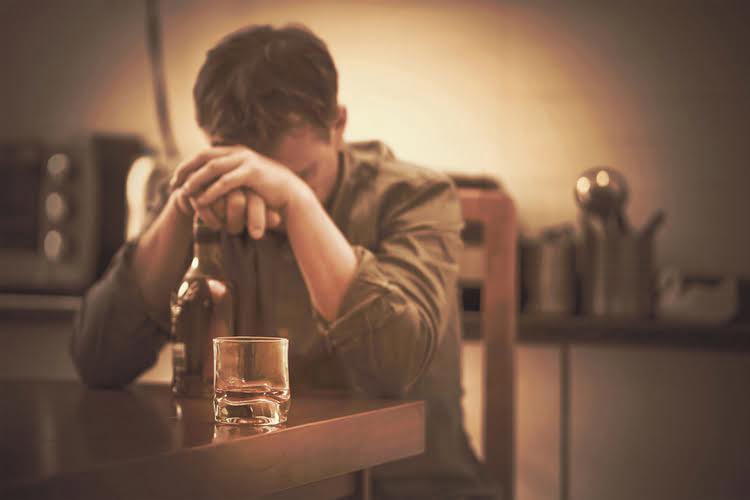Content
Our Resident Managers live on-site and oversee daily life at each sober living home. Our men’s apartments are spacious, comfortable, and tailored to meet the needs of males in recovery. With a strong community atmosphere and sense of camaraderie, our residents are all given a safe space to live while they focus on their recovery. Our sober living apartment units are completely furnished and come with great amenities, including a private pool, fitness center, coffee lounge, and much more.
How many sober living homes are in the United States?
Table 1 shows the number of homes per state in the United States, and we estimate that there are currently 17,943 recovery homes. California, New York, and Florida have the largest number of recovery homes. This suggests that there are more recovery homes on the east and west coast of the United States.
At a halfway house, you will continue working on your early recovery while enjoying the peer support of your fellow recovering housemates. State, county, and city governments are increasingly regulating sober living homes, so they meet specific standards. For example, poorly maintained and monitored homes charged $1,800 per person in 2002, which, even in Southern California, was far too much money and out of keeping with average rents in the area. States that regulate these facilities require a maximum number of residents, often fewer than 10. These facilities are houses located in quiet neighborhoods, although they may sometimes be in apartment buildings. Cost largely depends on the mortgage for the home and the average rent in the area.
What Is the Average Length of Stay at a Halfway House?
We hypothesize that barriers to expansion of SLHs might vary by stakeholder groups. Drug and alcohol administrators and operators of houses might therefore need different strategies to address the concerns of different stakeholders. If you thought sober living homes and rehab centers are the same, you’re not alone. Many people do not realize that sober living homes and drug and alcohol rehab centers (a more formal addiction treatment program) are two completely different places with different goals to help the patient recover.
What is the sober state in America?
Utah has by far the lowest incidence of binge drinking at 11.9%. The state has a large Mormon population that does not drink alcohol. The most sober state in the country is Utah, where 11.9% of the population report drinking excessively. Oklahoma was 49th with 14.5%.
Our purpose here is to summarize the most salient and relevant findings for SLHs as a community based recovery option. We then expand on the findings by considering potential implications of SLHs for treatment and criminal justice systems. We also include a discussion of our plans to study the community context of SLHs, which will depict how stakeholder influences support and hinder their operations and potential for expansion. The rules, expectations, and community in a sober house gives recovering addicts the support and structure that they need to ease their transition back to their normal daily lives.
Who Should Consider Joining a Sober Living House?
Halfway houses tend to be more affordable than sober living homes because they are built like dorms, have less structure and privacy, have fewer amenities, and are usually congested. On the other hand, California sober living houses are typically private residences offering their occupants comfort, privacy, and better services. While halfway houses provide an excellent and affordable sober living community, there may be some disadvantages to a halfway home for certain people. Some halfway house rules will be relatively universal, requiring clean breathalyzer and drug tests to remain living there. Other regulations or details will vary based on the individual house, such as specific times for curfew or alcohol/drug testing frequency. Living in a halfway house will provide you or your loved one with a safe, drug-free (and alcohol-free) environment.

With Austin’s well-established recovery community, easy access to local public transit, and vast employment opportunities, this growing city is an excellent place to start a new sober life. It often acts as a bridge between rehabilitation and preparing members to live independently – drug- and alcohol-free. While residents aren’t required to have completed a rehab program before entry, many of them have. The tools that individuals learn in intensive rehab programs may set them up for more sustainable success in a sober living house.
Women’s Sober Homes in Austin
Our intervention modifies motivational interviewing to address the specific needs of the offender population (Polcin, 2006b). Specifically, it helps residents resolve their mixed feelings (i.e., ambivalence) about living in the SLH and engaging in other community based services. Thus, the intervention is a way to help them prepare for the challenges and recognize the potential benefits of new activities and experiences. These measures were taken from the Important People Instrument (Zywiak, et al., 2002). The instrument allows participants to identify up to 12 important people in his or her network whom they have had contact with in the past six months.
- Everyone is different, every person’s recovery journey is different, so we will specifically create your treatment plan goals to help you.
- The support model at these homes is informal, and residents do not typically get professional services from the sober living home directly.
- Footprints has the Gold Seal of Approval, which is the highest standard.
- Unlike formal rehab programs that must get a license from the Department of Health Care Services (DHCS), California law on substance abuse is less restrictive on sober living homes.
- The National Association of Addiction Treatment Providers is a nonprofit professional society designed to offer support to organizations across the continuum of care.
Residents of halfway houses will likely be required to attend therapy or 12-step program meetings as part of the house requirements, but halfway houses themselves do not provide addiction treatment. Instead, they serve as a safe and supportive environment where recovering addicts can continue to work on their early sobriety. As a next step in our research on SLHs we plan to assess how they are viewed by various stakeholder groups in the community, including house managers, neighbors, treatment professionals, and local government officials. Interviews will elicit their knowledge about addiction, recovery, and community based recovery houses such as SLHs. Their perceptions of the strengths and weaknesses of SLHs in their communities should provide data that can be used to modify houses to improve acceptance and expand to serve more drug and alcohol dependent persons.
The 9 Most Expensive Drugs in America
To maximize generalization of findings, very few exclusion criteria were used and very few residents declined to participate. Primary outcomes consisted or self report measures of alcohol and sober house drug use. Secondary outcomes included measures of legal, employment, medical, psychiatric and family problems. Some measures assessed the entire 6 months between data collection time points.
Our sober living homes start at $550 per month to meet your budget needs. Depending on the property and room option you select, you may pay anywhere from $550 to $1,800 per month. Treatment support services such as IOP, employment assistance, educational planning, and regular drug testing are also provided to ensure that all residents have every opportunity to sustain long-term recovery.
The list of TDMHSAS-Recognized Permanent Recovery Housing Options below will continue to grow as we issue new grants and community based organizations open new opportunities. New residents will establish healthy friendships with others in recovery. They support each other by attending meetings and classes together, networking to gain employment, ride sharing to work, and enjoying many outdoor activities that Idaho has to offer. Our sober living homes have plenty of space to comply with distancing recommendations.

Tags: